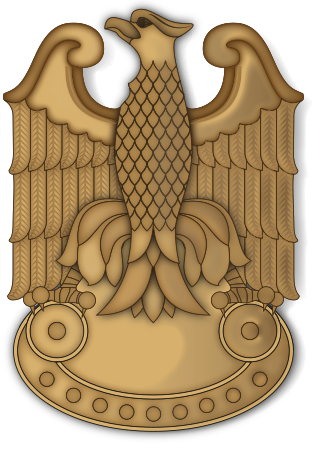
The People's Guard was a communist partisan force of the Polish Workers' Party (PPR) active in Occupied Poland during World War II from 1942 to 1944.
The Bielski Brothers: The True Story of Three Men Who Defied the Nazis, Built a Village in the Forest, and Saved 1,200 Jews is a non-fiction book by Peter Duffy, which was published in 2003. It tells the story of Tuvia Bielski, Alexander Zeisal Bielski (Zus), Aharon Bielski, and Asael Bielski, four Jewish brothers who established a large partisan camp in the forests of Belarus during World War II which participated in resistance activities against the Nazi occupation of the country, and so saved 1,200 Jews from the Nazis. The book describes how, in 1941, three brothers witnessed their parents and two other siblings being led away to their eventual murders. The brothers fought back against Germans and collaborators, waging guerrilla warfare in the forests of Belarus. By using their intimate knowledge of the dense forests surrounding the towns of Lida and Novogrudek, the Bielskis evaded the Nazis and established a hidden base camp, then set about convincing other Jews to join their ranks. The Germans came upon them once but were unable to get rid of them. As more Jews arrived each day, a robust community began to emerge; a "Jerusalem in the woods". In July 1944, after some 30 months in the woods, the Bielskis learned that the Germans, overrun by the Red Army, were retreating back toward Berlin.

Operation Hermann was a German anti-partisan action in the Naliboki forest area carried out between 13 July 1943 and 11 August 1943. The German battle groups destroyed settlements in the area. During the operation, German troops burned down over 60 Polish and Belarusian villages and murdered 4280 civilians. Between 21,000 and 25,000 people were sent to forced labour in the Third Reich.

The German invasion of the Soviet Union started on 22 June 1941 and led to a German military occupation of Byelorussia until it was fully liberated in August 1944 as a result of Operation Bagration. The western parts of Byelorussia became part of the Reichskommissariat Ostland in 1941, and in 1943, the German authorities allowed local collaborators to set up a regional government, the Belarusian Central Rada, that lasted until the Soviets reestablished control over the region. Altogether, more than two million people were killed in Belarus during the three years of Nazi occupation, around a quarter of the region's population, or even as high as three million killed or thirty percent of the population, including 500,000 to 550,000 Jews as part of the Holocaust in Belarus. In total, on the territory of modern Belarus, more than 9,200 villages and settlements, and 682,000 buildings were destroyed and burned, with some settlements burned several times.

The Belarusian resistance during World War II opposed Nazi Germany from 1941 until 1944. Belarus was one of the Soviet republics occupied during Operation Barbarossa. The term Belarusian partisans may refer to Soviet-formed irregular military groups fighting Germany, but has also been used to refer to the disparate independent groups who also fought as guerrillas at the time, including Jewish groups, Polish groups, and nationalist Belarusian forces opposed to Germany.
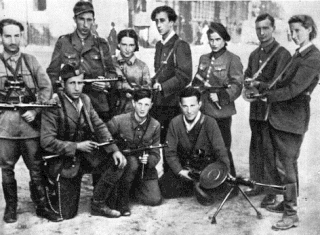
Jewish resistance under Nazi rule took various forms of organized underground activities conducted against German occupation regimes in Europe by Jews during World War II. According to historian Yehuda Bauer, Jewish resistance was defined as actions that were taken against all laws and actions acted by Germans. The term is particularly connected with the Holocaust and includes a multitude of different social responses by those oppressed, as well as both passive and armed resistance conducted by Jews themselves.

Jewish partisans were fighters in irregular military groups participating in the Jewish resistance movement against Nazi Germany and its collaborators during World War II.
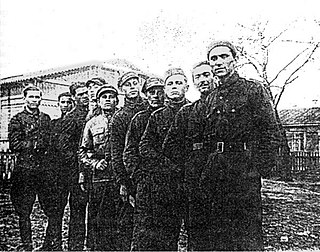
The Naliboki massacre was the 8 May 1943 mass killing of 127 or 128 Poles by Soviet partisans in the small town of Naliboki in German-occupied Poland.

Defiance is a 2008 American war film directed by Edward Zwick, and starring Daniel Craig as Tuvia Bielski, Liev Schreiber as Zus Bielski, Jamie Bell as Asael Bielski, and George MacKay as Aron Bielski. Set during the occupation of Belarus by Nazi Germany, the film's screenplay by Clayton Frohman and Zwick was based on Nechama Tec's 1993 book Defiance: The Bielski Partisans, an account of the eponymous group led by Polish Jewish brothers who saved and recruited Jews in Belarus during World War II.
Bielski is a Polish-language toponymic surname derived from one of placenames derived from the adjective biały, "white": Biała, Białe, Bielsk, Bielsko. The Lithuanized form is Bielskis/Bielskiene/Bielskytė, Latvian: Beslkis, East Slavic: Belsky.
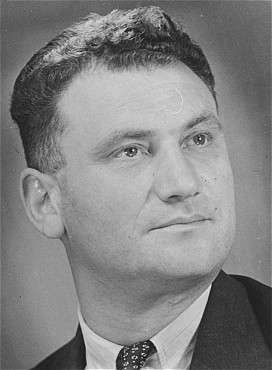
Tuvia Bielski was a Polish Jewish militant who was leader of the Bielski group, a group of Jewish partisans who set up refugee camps for Jews fleeing the Holocaust during World War II. Their camp was situated in the Naliboki forest, which was part of Poland between World War I and World War II, and which is now in western Belarus.
Nechama Tec was a Polish-American historian who was Professor Emerita of Sociology at the University of Connecticut. She received her Ph.D. in sociology at Columbia University, where she studied and worked with the sociologist Daniel Bell, and was a Holocaust scholar. Her book When Light Pierced the Darkness (1986) and her memoir Dry Tears: The Story of a Lost Childhood (1984) both received the Merit of Distinction Award from the Anti-Defamation League of B'nai B'rith. She is also the author of the book Defiance: The Bielski Partisans on which the film Defiance (2008) is based, as well as a study of women in the Holocaust. She was awarded the 1994 International Anne Frank Special Recognition prize for it.
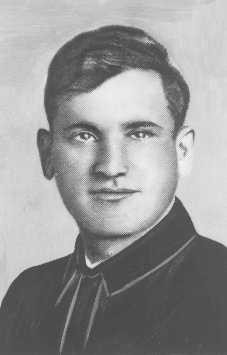
Asael Bielski was the second-in-command of the Bielski partisans during World War II.
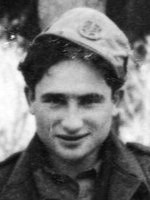
Aron Bielski, later changed to Aron Bell, is a Polish-American Jew and former member of the Bielski partisans, the largest group of Jewish armed rescuers of Jews during World War II. He was also known as Arczyk Bielski. The youngest of the four Bielski brothers, he is the only one still living.

Adolf Pilch was a Polish resistance fighter during World War II. He became part of the Polish special forces (cichociemni) trained in the United Kingdom, and was parachuted into occupied Poland on 17 February 1943. There, as a member of the Armia Krajowa Polish resistance, he organized a cavalry partisan unit in the Nowogródek area, and broke through to the Kampinos forest near Warsaw, taking control of this area. At its height of operations his unit consisted of up to 1000 men. Between 3 June 1943 and 17 January 1945 his partisans fought in 235 battles.
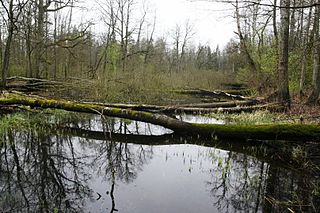
Naliboki Forest ) is a large forest complex in northwestern Belarus, on the right bank of the Neman River, on the Belarusian Ridge. Much of the area is occupied by pine forests and swamps, and some parts of the Naliboki are rather hilly. Rich fauna include deer, wild boars, elks, beavers, bears, bison, wood grouses, heath cocks, snipes etc. The forest is named after a small town of Naliboki situated in the middle of it, although the title of "informal capital of the forest" belongs rather to the town of Ivyanets.

Alexander Zeisal "Zus" Bielski was a leader of the Bielski partisans who rescued approximately 1,200 Jews fleeing from the Nazi Holocaust during World War II.
Koldichevo (Kaldyčava/Koldychevo/Kołdyczewo) was the site of a Nazi concentration camp 16 kilometres (10 mi) north of Baranovichi, Belarus. About 22,000 people, mostly Jews, were killed in the camp between 1942 and 1944. The murders in the camp were done as part of The Holocaust in the Baranavichy District.
Of the six million Jews killed during the Holocaust, two million were women. Between 1941 and 1945, Jewish women were imprisoned in Nazi concentration camps or hiding to avoid capture by the Nazis under Adolf Hitler's regime in Germany. They were also sexually harassed, raped, verbally abused, beaten, and used for Nazi human experimentation. Jewish women had a sizable and distinct role in the resistance and partisan groups.
The Stowbtsy-Naliboki Group was a partisan unit of the Home Army organized in the Stowbtsy District in the Eastern Borderlands, fighting from 1943 to 1945 in the Nowogródek Voivodeship, during the Warsaw Uprising, and in the Piotrków and Kielce regions.













